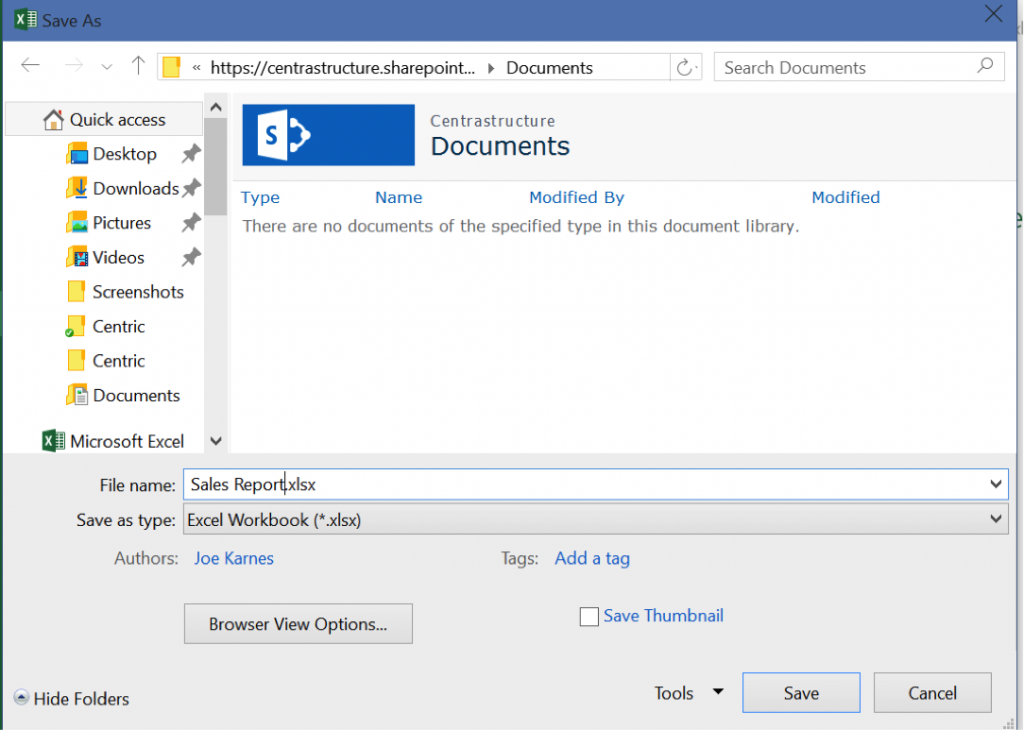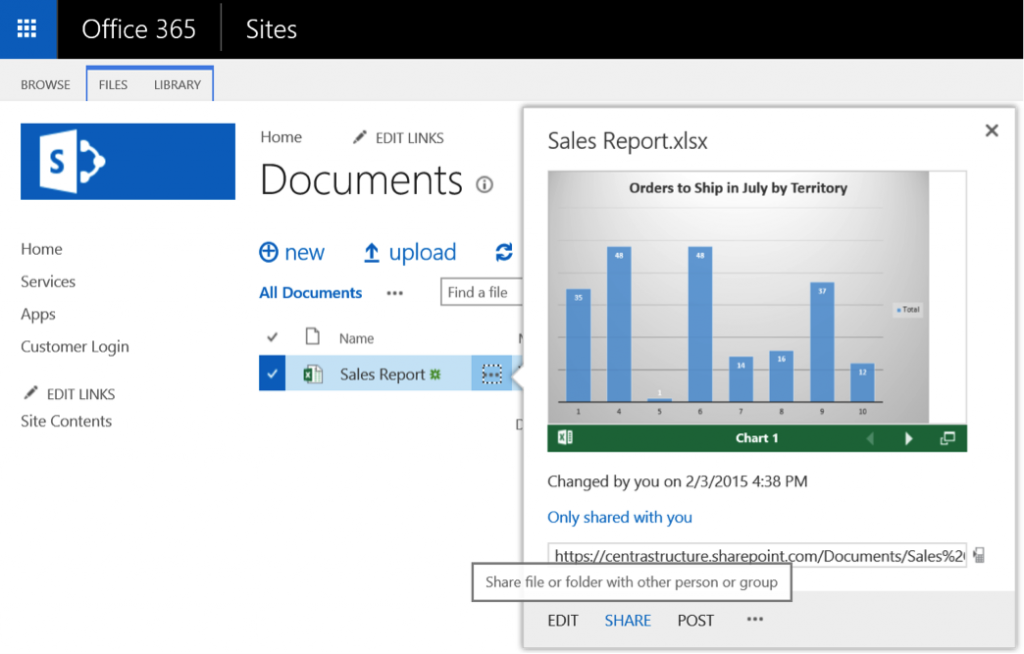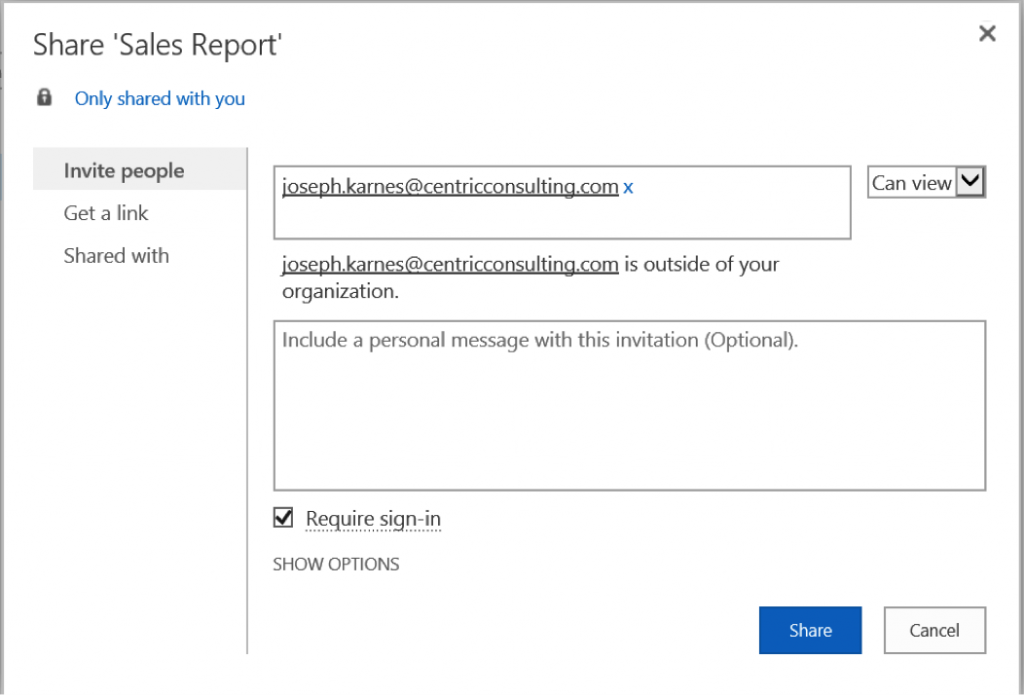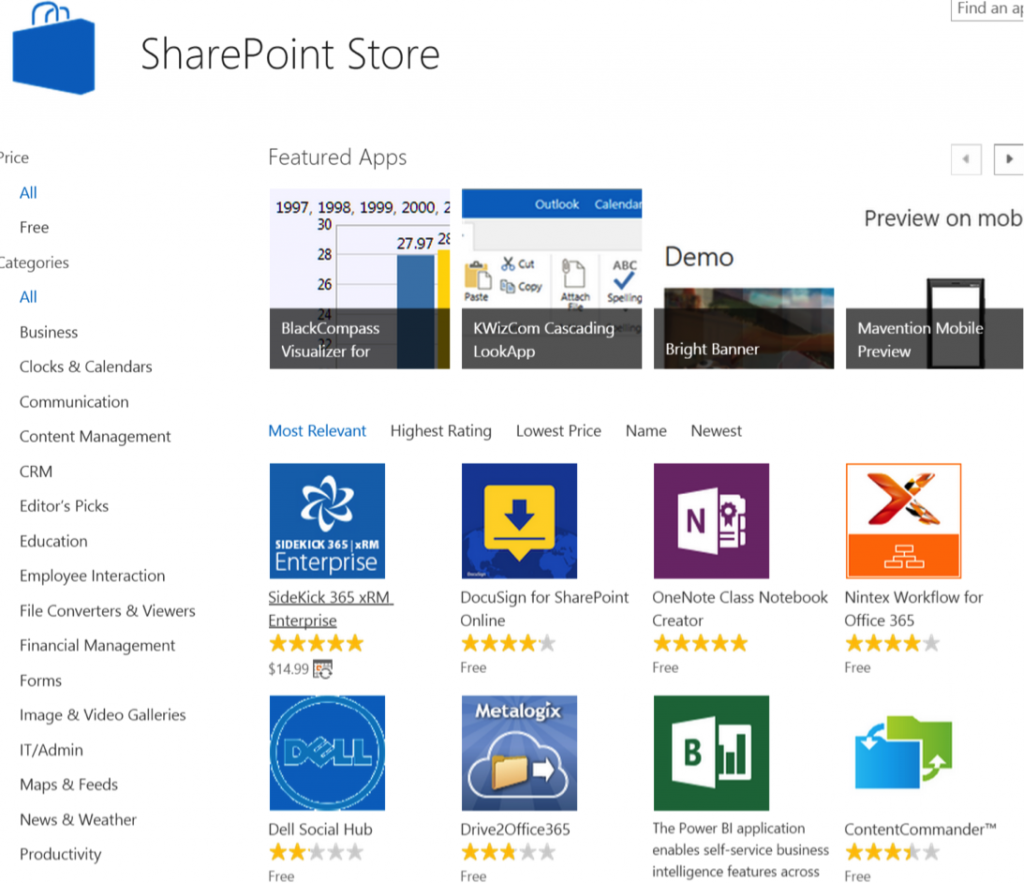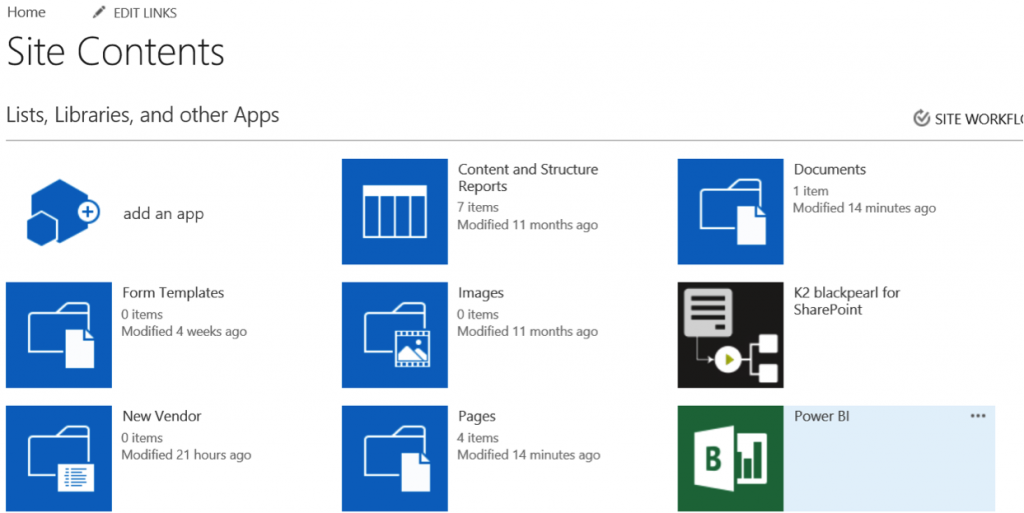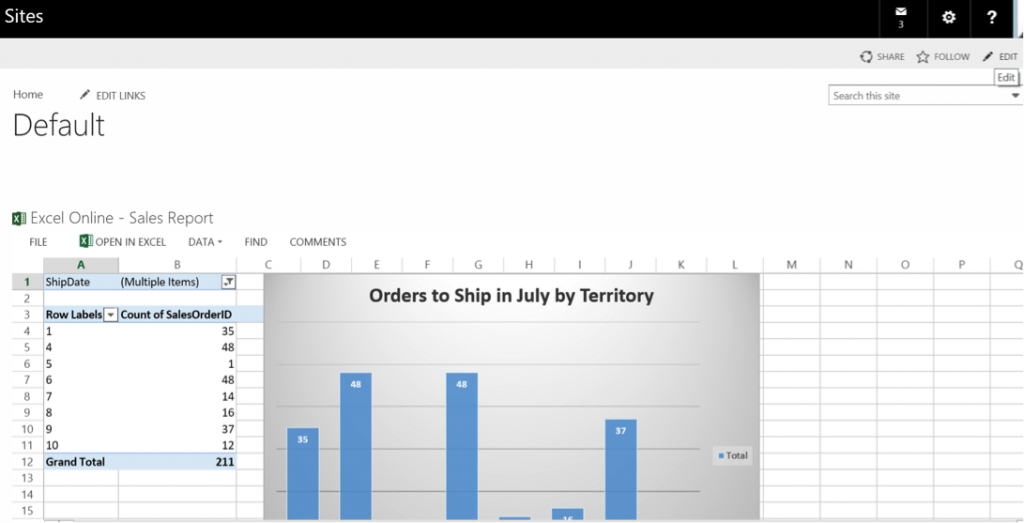Sharing a Report From a SharePoint Online Document Library
This is the third and final post in a three-part series focusing on the fundamentals of Microsoft’s Power BI, a cloud service that allows you to share, collaborate and access Excel reports anywhere on any device.
In this series, you will learn how to add a Power BI License to an Office 365 subscription, add new data sources, and share your report from a SharePoint online document library.
In our previous two posts, we connected our On-Prem SQL Server to Power BI, and then connected our SQL Database as OData Feed to Power BI. We also created a sample report in Microsoft Excel that leveraged the data we exposed. Now that we have our report, how do we share that information with other people? There are actually a few different ways we can accomplish this and we’ll walk through a few different examples to allow you to share this information with your colleagues, or even external partners and customers.
We’ll start this post off with the simple, no frills way to share with anyone:
Share your report from a SharePoint Online Document Library
Sharing a report is pretty easy. If you have a document library on SharePoint Online, you can save your report right from Excel. In Excel, just go to File -> Save As, and then point your location to the URL of the document library and save it.
Before saving, you can also customize how the report can be shown if users view it in either Excel Online or by displaying it in Excel Web Access by clicking the browser view options. This will allow you to only display certain sheets, or even certain charts or tables!
Once the file has been saved to SharePoint, open a browser and navigate to the location of the document library where you saved the file. If you click the ellipses next to the file name, you can open a preview of the file. You can also share the file from this menu by clicking the Share button:
From here, we can assign user permissions to this file and also send email invitations to either view or edit the file. This applies to both your internal and external users! When you have assigned the correct permissions, just click Share, and those users can now view the file directly. (NOTE: You must have external sharing turned on for the site collection the document library resides in).
Display your reports through the Power BI app for SharePoint Online
With the addition of the Power BI license, you can now add the Power BI app from the SharePoint Store to your site collections. To install this app, just go to the SharePoint Store, select Power BI, and then click Install.
Once it has been installed into your site collection, you can navigate to the app by going to Site Contents, and then clicking on the Power BI App Icon:
This will automatically bring you to the Power BI dashboard page. The app will automatically search your document libraries to find any potential sites. As you can see below, our sales report has automatically been discovered. Our next step is to enable the interactive view for the report. We can do this by just clicking the icon for the report.
When the report opens, we will be promoted to enable it for Power BI. All you need to do is click Enable, and all the Power BI functionality will be enabled in the app.
Now, if we return to our dashboard we can see an interactive view of the report and we can now also perform different functions on the report.
Use Excel web access in SharePoint Online (Only for SharePoint Online E3 and above subscriptions)
We can also display the report in SharePoint Online with the Excel Services web part. First, create a new page in your SharePoint Online site, and then click Edit Page. When in Edit mode, just click on Add a Web Part to open the web part selection ribbon. Browse to “Business Data” and choose the Excel Web Access web part:
Once the web part has been added, we will need to configure it to display our report. Just click on “Click here to open the tool pane” on the web part to open the tool pane:
From the tool pane, we can browse to a report and quickly add it to the web part. You can also customize the behavior of the web part for how the users will interact with the report. I will cover this functionality more in-depth during a later posting. For now, just accept the defaults and click OK.
We now have the entire report displayed on the SharePoint page. We could add even more reports to different areas of the page, creating an entire dashboard of information based on our Power BI content. Best of all, the information is refreshable and therefore timely to your end users. Also, by clicking the Share button in the top right corner, we can easily share this entire page of information with our internal and external users, just as we did with the single file!
I hope this series was useful to you and helps demonstrate how easy setting up and getting started with Power Bi is. I will dive into more in-depth areas of the product in future posts, as well as other topics including SharePoint, Azure, and other features of Office 365.

